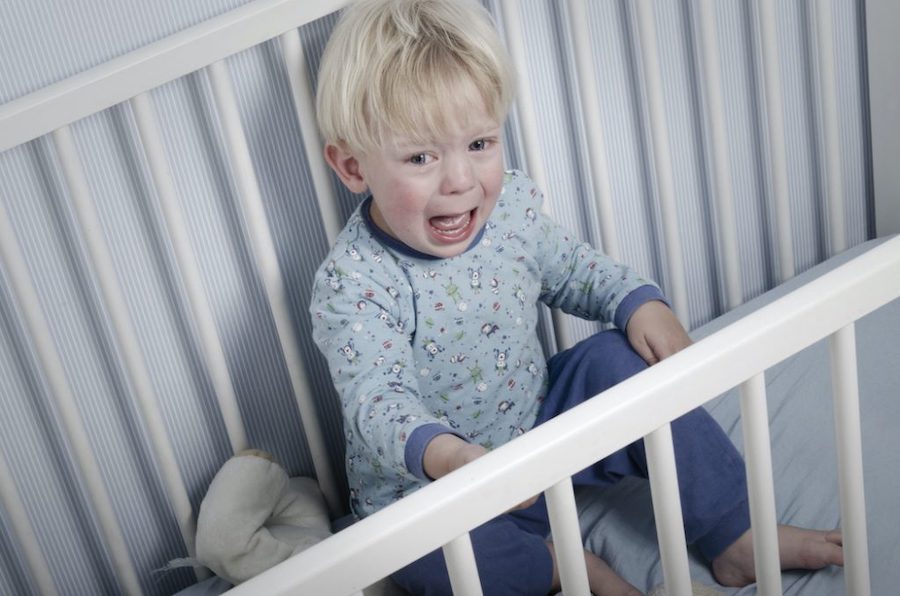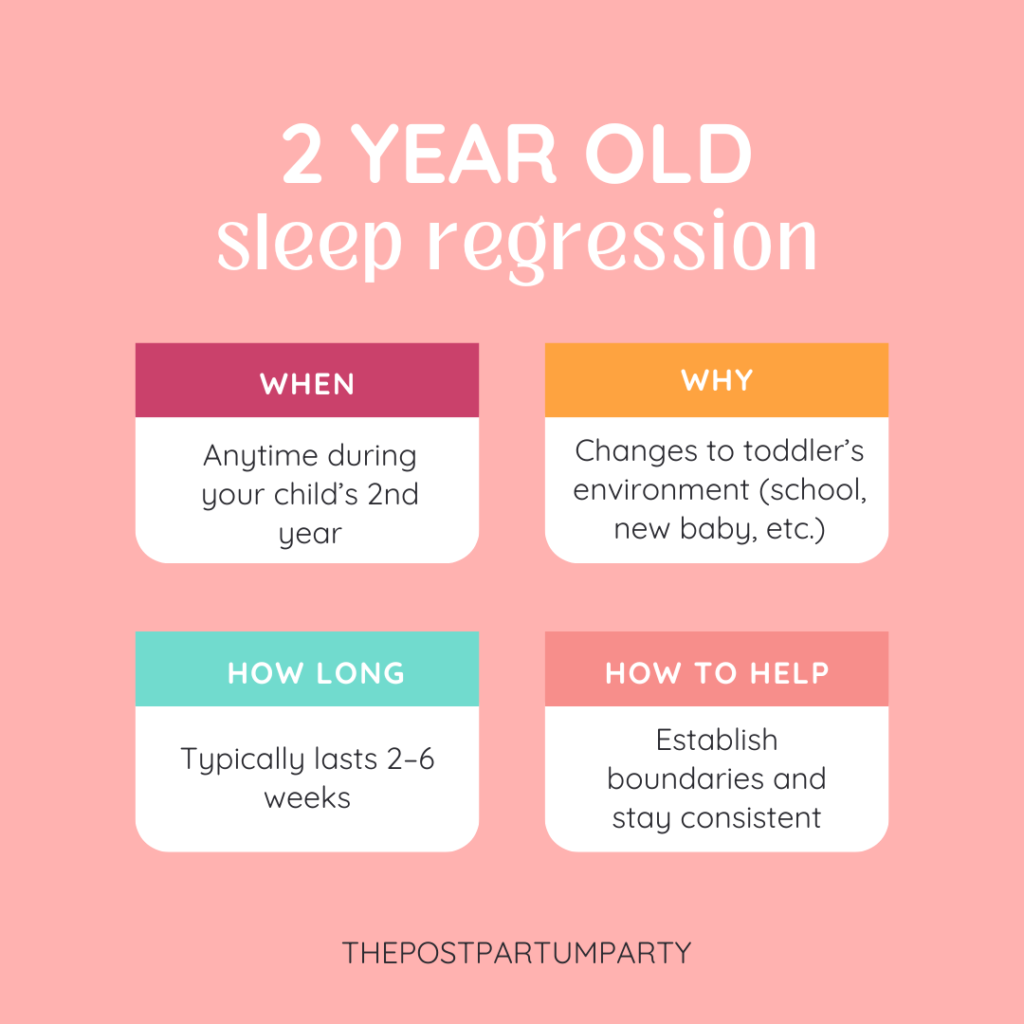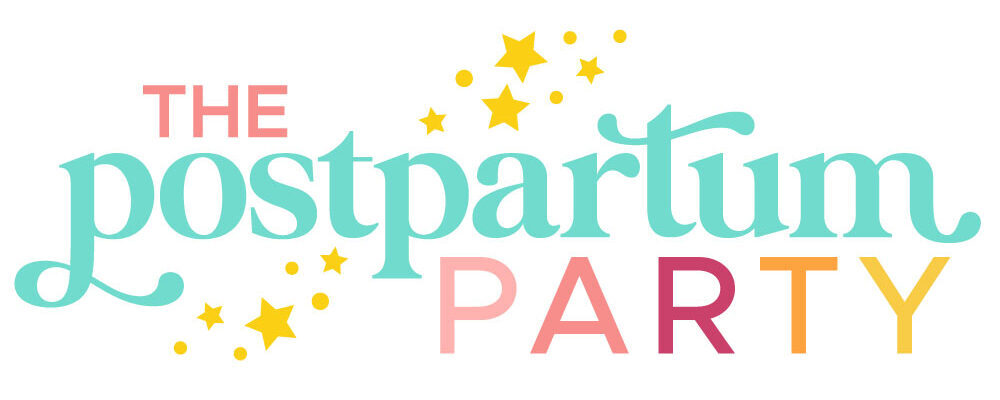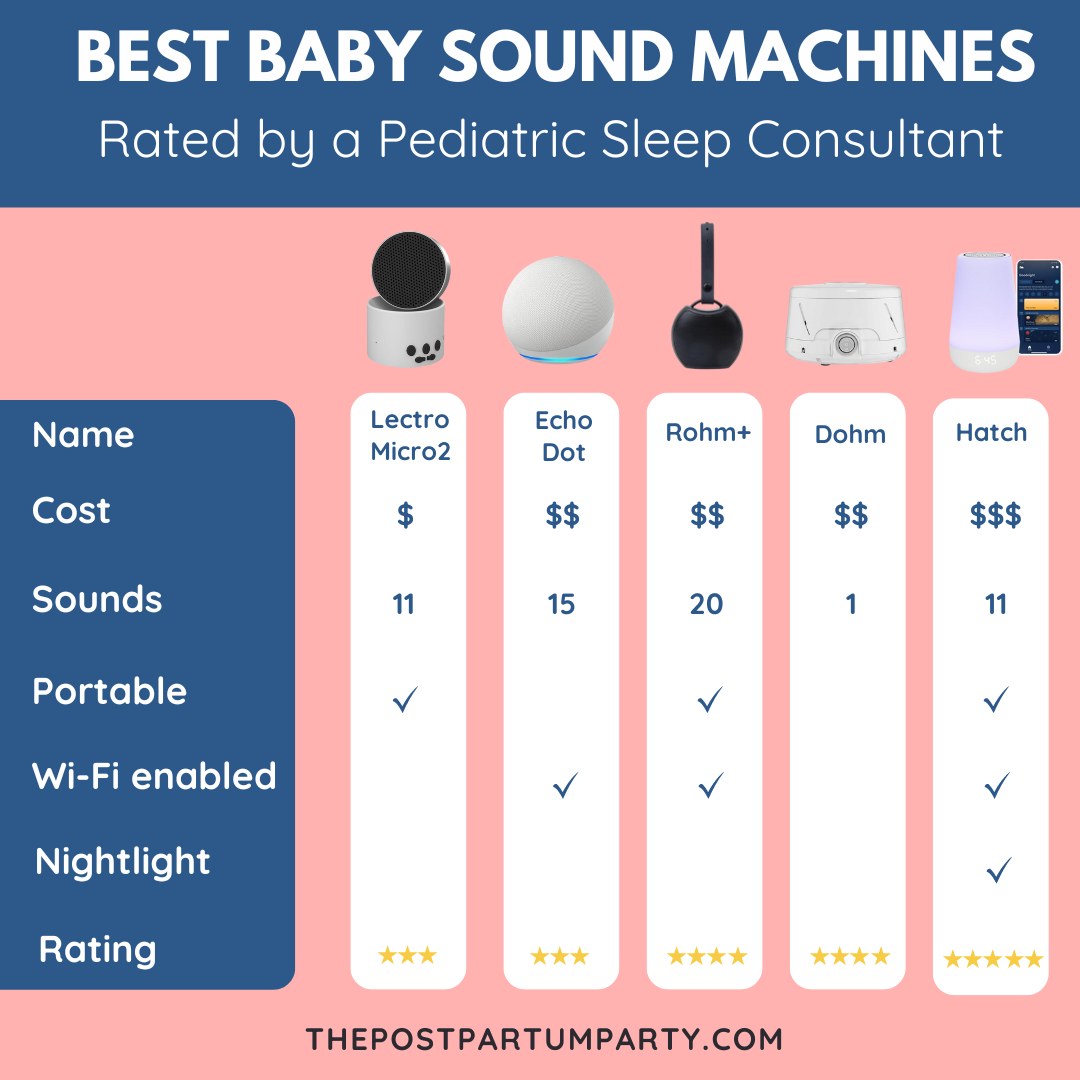Many toddlers go through a sleep regression around two years old. Learn more about why the 2 year old sleep regression happens and 10 tips to help make it through

You know what’s almost harder than newborn sleep problems? Toddler sleep problems.
Your little baby is growing up and is starting to form his own opinions, push boundaries, and struggle with a sleep regression all over again.
Many toddlers go through a two-year old sleep regression that can make parents feel like they have a newborn baby in the house all over again. The two year sleep regression can technically happen anytime between 2 to 3 years old.
We certainly experienced it with my daughter! She went from sleeping 11 to 12 hours every night to waking us up at least once during her nighttime sleep several times a week.
There really was no rhyme or reason to the wake ups. We learned that we had to stay consistent in our approach with her if we wanted to sail past the regression without forming new sleep habits.
We were determined to keep everyone in their own beds throughout the night and not allow bedtime to become a battle.
The good news is that the 2 year old sleep regression is one of last major sleep regression that kids go through! The best thing to do is to stay consistent with your approach and maintain consistent boundaries and you can come though on the other side with a good sleeper for life.
Want a way to incentivize your toddler or preschooler to stay in their bed all night long? Download my free reward chart to help your toddler stay motivated. Get the free chart here
Is There a Sleep Regression at Two Years Old?
There is definitely is a sleep regression at two years old! But unlike other sleep regressions, this one is more about your toddler asserting his independence than a change in his sleep patterns.
From protesting bedtime to climbing out of their cribs, older children (especially toddlers) are all about pushing those limits and seeing what they can get away with!
The sleep regression can rear its ugly head in a number of ways including:
- Toddler waking up too early in the morning
- Refusing their daytime nap altogether or waking up early from naps
- Middle of the night wake ups
- Protesting bedtime
- Climbing out of the crib
- Not staying in their room if they’ve transitioned to a toddler bed
Remember that boundary-testing is the biggest part of the two-year old sleep regression (and also completely developmentally appropriate!).
If you can keep that in the back of your mind it will empower you to stay consistent with your toddler and help everyone make it past the 2 year old sleep regression without forming new sleep habits.
Is It Normal For a 2 Year Old to Go Through a Sleep Regression?
While this sleep regression may not hit right at your kiddo’s second birthday, it is a completely normal regression. And there are plenty of possible causes for it!
The 2 year old sleep regression often pops up due to developmental milestones and big changes to the normal daily routine.
As your toddler gets older, their sleep cycles change and they need less sleep, which means their daily schedule is going to change.
Your toddler’s imagination is also developing rapidly.
It’s so fun to see their creativity in action, but it can also cause some nighttime fears or nightmares. They also may now have the language skills to tell you that they’re feeling scared at bedtime.
Aside from developmental changes, other life changes like starting nursery school or gaining a sibling can play a role in causing this regression, too.
Causes of the 2-Year Sleep Regression
Your two-year old may suddenly start waking up in the middle of the night after previously sleeping through with no problem. Many toddlers also start resisting bedtime and naps around this age, leaving parents to wonder if it’s time to drop the nap. (No, not yet!)
Any number of things could be the reason your two year old suddenly starts waking up in the middle of the night. Here are some of the culprits for those middle of the night wake ups:
- Potty training
- Welcoming a new sibling
- Fear of the dark or other imaginary objects
- Two-year old molars
- Separation anxiety
- Starting a new preschool
- Learning new skills like language
- Being a toddler
All of these things can cause little bit of anxiety in your toddler. Pair this with their need to test those boundaries and you have a perfect mix for a sleep regression.
How Long Does the 2 Year Old Sleep Regression Last?
Sleep regressions can last anywhere from two to six weeks, but at this age it will be especially important that you don’t introduce new habits like laying with your toddler to sleep or letting him crawl into bed with you.
If you keep a consistent sleep routine and good sleep habits, the sleep regression will pass shortly.
However, if you start new sleep habits like co-sleeping or laying on the floor of your child’s bedroom, then that can easily become the new norm until your child grows out of it or you use a sleep training method to get back on track.
What Do I Do If My 2 Year Old Has A Sleep Regression?
If your two year old is experiencing a sleep regression (and most toddlers do!) know that it is temporary.
Sometimes there aren’t any new changes in a two year old’s life and they’ll still go through a sleep regression. Just chalk it up to having a toddler and remember that it’s a phase and will pass.
The best thing to do in the face of a sleep regression is to offer support and comfort without starting new, unsustainable habits.
Follow these practical tips to help you get through the two year regression and come through the other side without new and unwanted sleep habits.
How Do I Fix My 2 Year Old Sleep Regression?
The 2 year old sleep regression will show up in different ways for each child.
Some children will struggle with naps, some with bedtime, some with middle of the night wake ups, and some will struggle with all three!
Others will suddenly start having toddler bedtime tantrums and protesting going to sleep.
Follow these different solutions, depending on how the 2 year old regression is showing up with your toddler.
Keep the crib.
If your child is struggling and still in a crib, keep them in it. Struggling with sleep is one of the signs your toddler is not ready for a bed just yet.
Check their sleep schedule.
It’s important to know your toddler’s sleep needs based on their age.
Double check your 2 year old’s sleep schedule and make sure their nap time is sufficient. Around 24 months of age, most kids need between 5 and 6 hours of awake time in between a nap.
Most two year olds need about 13 hours of sleep in a 24-hour period, and one to two hours of napping in the middle of the day is a great goal for this age.
Many two year olds start resisting nap time, so parents think it’s time to drop it. But most toddlers still need a mid-day nap until about age 3 or 4.
You can use crib hour to ensure your baby has a chance to fall back asleep during nap time.
Keep offering naps.
If your two year old starts protesting his nap—or plays through it altogether—continue to offer the nap daily instead of throwing in the towel. That rest time is so important!
Continuing to offer a nap is the best way to ensure that your toddler gets enough sleep. Even if they sometimes don’t fall asleep and it turns into quiet time instead, that’s okay.
Don’t mistake a 2 year old nap strike for the readiness to drop a nap altogether. Learn more about when kids stop napping altogether here.
If you pull the nap too soon from your toddler’s sleep schedule, he may start melting down at 4 p.m. every day from being overtired and overstimulated.
Stick to the bedtime and nap routines.
Even if you are offering a slightly earlier bedtime to make up for missed daytime sleep, it’s a good idea to stick to a consistent bedtime routine.
Your toddler is much more likely to have an easy time settling down when they know what to expect before bed every night.
Keep your bedtime routine consistent and set clear boundaries for your toddler. A predictable bedtime routine means you’re being intentional about spending calming, quality time with your little one to ease them into nighttime sleep.
For the nap time routine, keep it short (between 5 and 10 minutes) and do the same 2 or 3 activities before nap time to help your child wind down and cue to them that sleep is coming.
Your nap routine can be going into your child’s room, reading one or two books and then tucking them in. A short and simple routine that you do every day can help with the nap time resistance.
Offer choices.
Bedtime or nap resistance can sometimes happen when toddlers are having a hard time with a lack of control in their daily lives. That’s why it’s helpful to give them forced choices.
Toddlers love to be in control. If your child understands language, you can give him forced choices through the bedtime process for the different activities you do leading up to bedtime. This is a great time to give toddlers a sense of autonomy.
Some examples of choices you can give your toddler at bedtime include:
- Do you want to wear the blue pajamas or red pajamas?
- Do you want to read two books or three books?
- Do you want mommy to read the book in silly voice or serious voice?
Check screen time.
Toddlers can have a difficult time settling down for sleep when their brains have been recently stimulated with screen time. The blue light and noise doesn’t have the kind of calming effect we’re going for before sleep!
Try to cut off screen time at least 30-60 minutes before it’s time for bed.
Also keep in mind that your toddler might come across ideas and concepts in media that are very new to them and potentially a little scary or alarming.
Make sure to allow your toddler time and space to express his concerns throughout the day. If fears have popped up, let him talk about those and reassure him that he is safe in his room.
Choose a sleep training method.
If you’ve determined that your toddler’s sleep schedule is appropriate and they are still waking up in the middle of the night, you can sleep train them.
Sleep training your toddler will reinforce that night time is for sleeping and can help prevent you from developing new sleep habits.
Choose a sleep training technique that works with your parenting style and your child’s personality and stay consistent.
Consider using a toddler sleep training method such as the Chair Method technique if your little one is still struggling at bedtime to keep your toddler in bed.
Use an okay-to-wake clock.
The reality is that your toddler has no real sense of what time it is.
It can be so helpful to introduce a visual cue so your toddler knows when it’s bedtime and when it’s morning time.
I recommend an okay to wake clock such as the Hatch Rest or Rest Plus for this.
Stay calm and consistent.
Sleep disruptions are hard enough on your toddler due to pure exhaustion. But if they’re able to sense your frustration, too, it can add big emotions to an already exhausting situation!
Give your toddler plenty of love and attention throughout the day, especially if there has been a major change in your life like starting preschool or bringing home a new sibling.
Toddlers actually feel safer when we maintain boundaries and consistency. Try to stick to a consistent routine and remember that it’s just a phase.
At your wit’s end with your child getting out of bed?
The Big Bed Blues course walks you through the process of getting your child to sleep in their own bed for 10–12 hours every night. End the power struggles and sleepless nights once and for all with the Big Bed Blues Course.
2 Year Old Sleep Regression FAQs
Do all 2 year olds go through a sleep regression?
Toddler sleep regressions are totally normal, but not universal. While the 2 year old sleep regression is common, not every child will experience it.
My 2 year old never had a sleep regression until now. Is that normal?
If your little one reaches two years of age and hits their first sleep regression ever, count yourself lucky!
While most parents think of baby sleep regressions as something that only happen in the first year, the toddler years can actually be pretty challenging for sleep. The power struggle is real.
The thing is, toddlers are masters of stall tactics. Bedtime resistance might come in the form of requests for one more sip of water, two more stories, one more trip to the bathroom. The list will go on and on if you let it!
Should I adjust my toddler’s nap schedule during the regression?
If you’ve remained consistent with naps and your child is wide awake at bedtime and having trouble falling asleep—or if they are consistently waking up early in the morning—you can start cutting their afternoon nap by about 15 to 30 minutes.
You may need to wake them up from their nap each day to maintain their overnight sleep. But we want to try to avoid making any major changes to their nap, especially during a regression, because we’re trying to avoid an overtired child.
Is it okay to bring my child into my bed during the regression?
When in the throes of a sleep regression, maintaining independent sleep habits may feel really difficult. However, we don’t want to introduce any sleep habits that will be hard to break in the future.
That means keeping your 2 year old in their own bed, even if they’re experiencing night waking, is so important. If you’ve already transitioned them to a big kid bed, keeping them in their own room might be harder to do.
Check out my blog post on how to troubleshoot keeping your toddler in their own bed.
Are there any preventive measures for sleep regressions?
There are certainly things you can do to make your two year old’s room most conducive to sleep, and a place where they feel safe and secure. I really recommend the use of a white noise machine and blackout curtains.
You can also offer comforting items like a stuffed animal or blanket, especially since your toddler is at an age that the American Academy of Pediatrics deems it safe to do so. And if your toddler has developed a fear of the dark, offer them a night light!
Can teething contribute to the 2-year-old sleep regression?
The two year old molars start to come through anytime between 23 to 33 months old, and the discomfort from those teeth erupting could very well impact your 2 year old’s sleep for a short period of time. However, this discomfort should only last for a few days.
Will my child’s sleep patterns return to normal after the regression?
The good news is that sleep regressions aren’t permanent, and this too shall pass. When you come out on the other side, though, you might have a couple new things in place to help reassure your toddler’s new fears at night time.
For example, they might sleep with a night light moving forward, or even keep a bottle of “monster spray” next to their bed.
When should I be concerned that it’s more than just a regression?
If your toddler’s sleep is so disturbed that their sleep needs aren’t being met consistently for longer than six weeks, it might be time to consult with your pediatrician. This is especially true if you’ve noticed a big change in your child’s personality and behavior as well.
- Practical Tips if your Toddler is Going Through A 3-Year Old Sleep Regression - April 26, 2024
- Baby Led Weaning vs Purees — Which Should I Choose? - April 25, 2024
- 10 Adorable Letter Board Pregnancy Announcements - April 25, 2024









We are in MONTH 5 of the two year regression. I guess we just don’t need to sleep ever again. She won’t go to sleep, wakes up multiple times during the night, then is awake before 6.
We used a sleep consultant and that “system” slightly worked for a couple weeks.
I can’t find anything that gives advice about how to handle midnight waking. Do you have any advice on how to handle that type of situation?
Hi Kelly,
I would need more information to try and determine why the waking is happening and how you respond to it.
-Amy
This was a very good article but none of the research I have done give suggestions on what to do with early wake up. Any advice?
Hi Ashley,
The Hatch Rest can be a huge help for early morning wake ups: https://amzn.to/31c9gqQ. Toddlers can’t tell time so this reinforces the idea that it’s still sleep time.
I also have a separate post about early morning wake ups which might be helpful: https://thepostpartumparty.com/baby-waking-up-too-early/
Hope that helps!
Amy